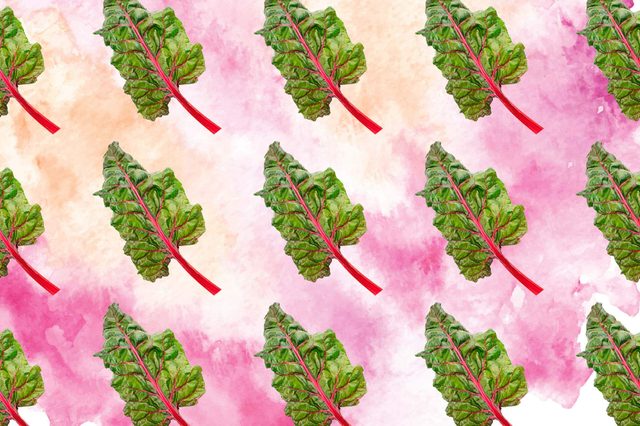
Swiss chard
It looks like kale, but we must say—it’s prettier. Swiss chard might have white, yellow, red, or bright green stems. “Swiss chard is a cruciferous vegetable like kale,” says Katrine van Wyk, holistic health coach and author of Best Green Eats Ever. “All cruciferous vegetables have been shown to have potent cancer-fighting abilities.” Just one cup of Swiss chard serves up more than 700 percent of your daily vitamin K requirement (important for bone health). The veggie is also rich in antioxidants that help protect cells from environmental damage and stress from toxins.
Try it: Swiss Chard can be a tasty addition to soup, quiches, pasta (like in this spaghetti with scallops), and more. Sauté in olive oil with zest from one orange for about four minutes until the chard wilts. Toss with juice from the orange, salt, and pepper.
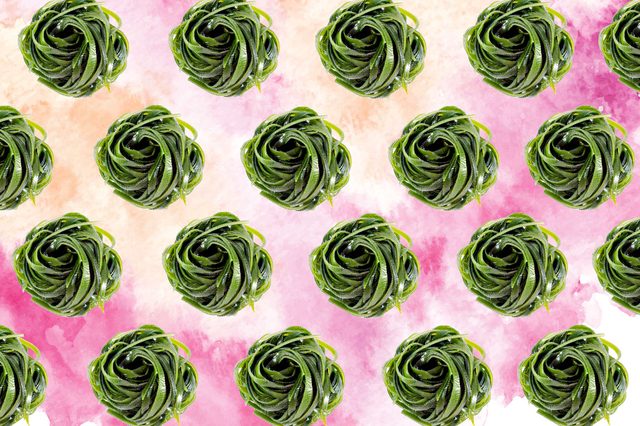
Kelp
Kelp is packed with magnesium, iron, and calcium, which can promote healthy bones, skin, and hair. What’s more, its high iodine content helps the thyroid function properly. (The thyroid regulates the body’s energy production; a sluggish thyroid can cause weight gain. Here are other thyroid facts you need to know.) “Kelp stands apart from traditional greens because it has certain enzymes that are found only in sea vegetables,” notes Jackie Newgent, RDN, nutritionist and author of The With or Without Meat Cookbook.
Try it: Mix one cup of kelp with three tablespoons soy sauce and 1 tablespoon honey. Add to hot, sautéed potatoes for a savoury dish.
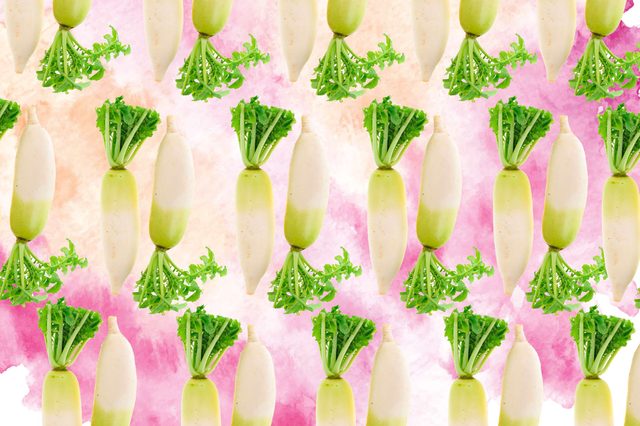
Daikon radish
A staple in Asian cuisine (daikon is Japanese for “great root”), this white root vegetable adds a subtle bitterness to your meal, along with potassium, magnesium, vitamin B6, and vitamin C. “Eating bitter food helps us keep sweet cravings in check,” says van Wyk. “This is an easy one to throw in with other vegetables.”
Try it: Mix slices of daikon radish with your other favourite veggies—carrots, red peppers, etc.—and toss with olive oil, salt, and pepper. Roast in the oven at 425 degrees until tender (time will depend on your mix of vegetables).
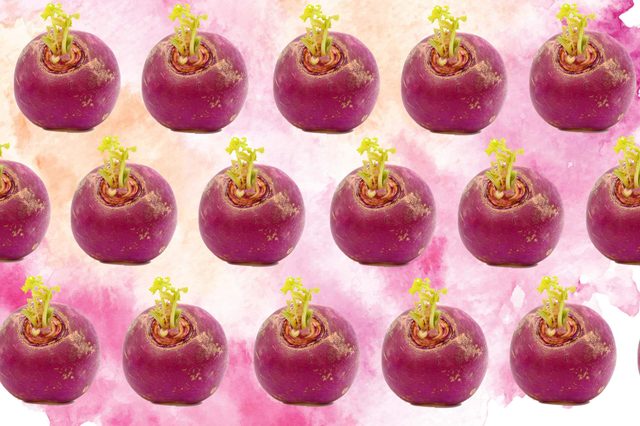
Rutabaga
A.k.a: the yellow turnip or swede, this earthy root vegetable is becoming a popular replacement for mashed potatoes, says van Wyk. “It’s high in vitamin C and has a slightly sweet and bitter taste.” Pair it with lamb, sausage, or other rich foods for a meal well balanced in flavour.
Try it: To make a rutabaga mash, peel and bring to a boil. Simmer for 30 to 40 minutes until tender. Drain, then return to a pan and warm for 2 to 3 minutes to dry. Use a food processor or blender to mash and add a dollop of butter and sprinkle of salt. (By the way, check out the real difference between butter and margarine.)
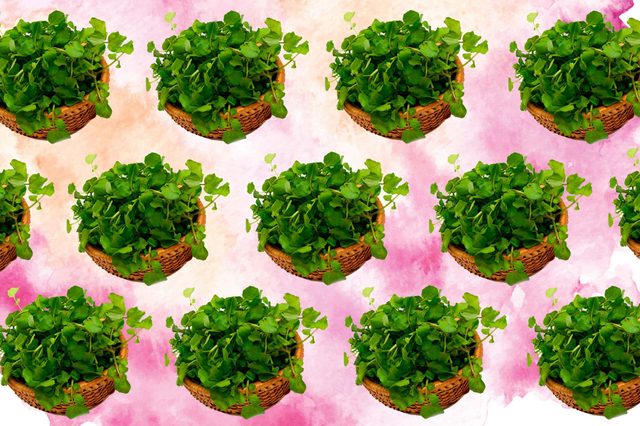
Watercress
A relative of mustard greens and cabbage, this peppery vegetable boasts big benefits despite its small leaves. Researchers at William Paterson University gave watercress first place in a list of 41 healthy fruits and vegetables, due to its hefty concentration of vitamin K and vitamin A. The leafy vegetable also has high levels of glucosinolate compounds, which studies have found may inhibit breast, colon, lung, and prostate cancers. “Watercress is just now catching on as an alternative to kale or arugula,” says Cynthia Sass, MPH, RD, and author of the upcoming book Slim Down Now.
Try it: Sauté with olive oil until leaves are wilted and slightly crispy, and season with pepper. Or, eat it for breakfast in this omelette.
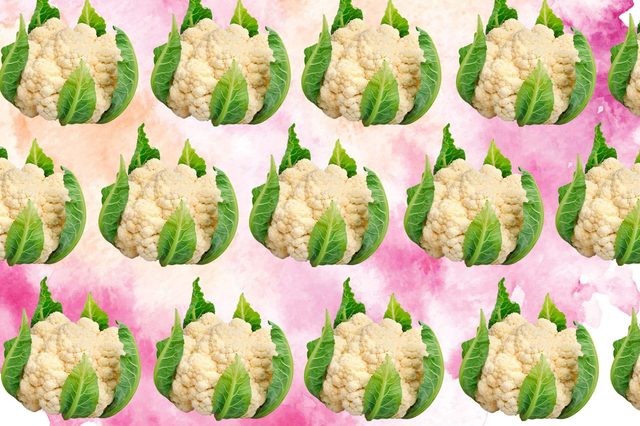
Cauliflower
This produce aisle staple is making a trendy comeback with foodies. It can be grinded as a rice substitute, which is handy for Paleo-style diets. “Cauliflower is much more nutritious than white rice, and it doesn’t have that many carbs, but it satisfies that craving,” says van Wyk. A cup of cauliflower has fewer calories than a cup of broccoli, but packs in more potassium and vitamin B. Nutritionists hale cauliflower—another potent cruciferous veggie—for its cancer-fighting properties.
Try it: Shred florets in a food processor until they reach a rice-like consistency. Sauté in a non-stick pan over medium-high heat with olive oil or coconut oil. Or, try any on of these cauliflower recipes.
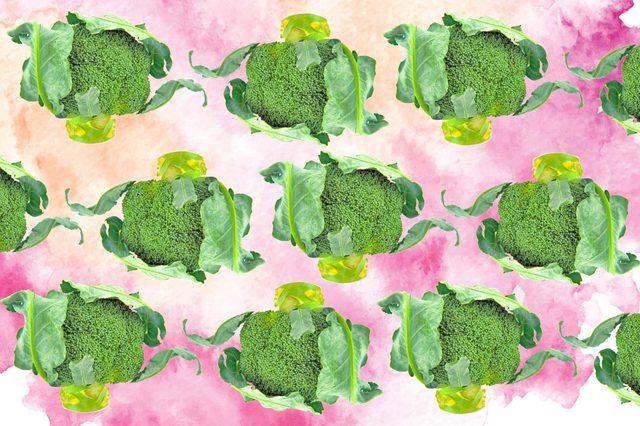
BroccoLeaf
If you’ve never been a broccoli fan, you may be surprised that its leaves taste completely different (think sweet peas!). Trademarked as BroccoLeaf, just a serving size of one to two leaves offers 100 percent of your daily value of vitamin C and is also a hefty source of vitamin K, vitamin A, folate, and potassium. “Broccoli leafs have always played a very important role in replenishing the soil for organic farmers,” says Ashley Koff, RD, celebrity dietitian and author of Mom Energy: A Simple Plan to Live Fully Charged. “It also helps the body detoxify and eliminate free radicals and oxidation that put us at risk for disease.”
Try it: Using 1 bunch BroccoLeaf, roll the trimmed leaves and slice into ½ inch wide “noodles.” Sauté with olive oil and garlic for two minutes, then top with crushed red chili flakes.
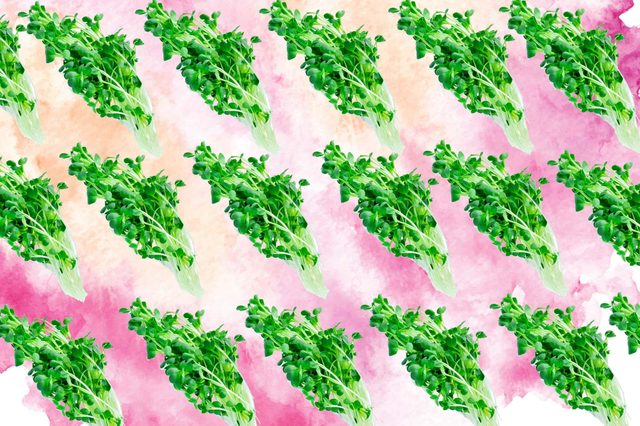
Microgreens
Tiny, young leaves—less than 14 days old—are popping up all over on restaurant menus. They may be little, but microgreens are concentrated with up to six times the nutrients of mature leaves of the same plant, found a study published in the Journal of Agricultural and Food Chemistry. “Chefs are trying to find ways to up the ante in taste, especially in healthier dishes,” says Newgent. “Microgreens are just as packed with flavour as they are with nutrients.” (While we’re on the topic of nutrients, there are the nutrients you need for optimal health.)
Try it: Get creative. Use microgreens as a topping for lentil soup, sprinkle on tacos in place of lettuce, or mix into an omelet with other veggies for a fresh health boost.
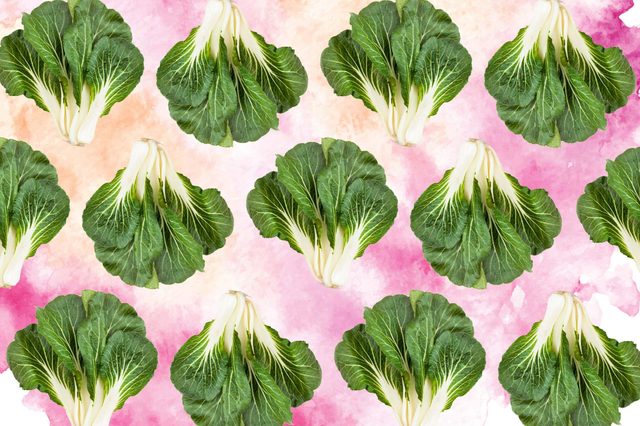
Collard greens
Collard greens offer more than the daily recommended intake of bone-strengthening vitamin K. Western Regional Research Center researchers discovered that steamed collard greens may also have cholesterol-lowering potential. (Here are some more natural ways to lower your cholesterol.) The green is high in fibre, which prevents constipation, and packed with vitamin A, which promotes healthy skin and hair.
Try it: Fill a steamer with two inches of water, then add chopped collard greens and steam for up to five minutes. For extra flavour, toss with your favourite ingredients, such as lemon juice, garlic, or cayenne pepper.
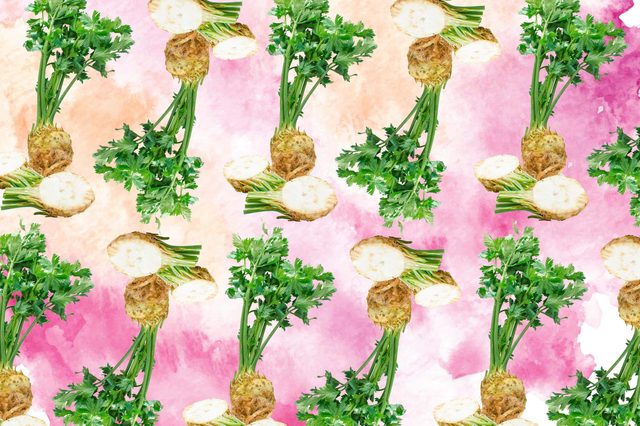
Celery root
Celeriac, or celery root, is knobby and warty—it’s not winning any awards for the most beautiful food—but on the inside, it extraordinarily healthy. One cup of celeriac, which tastes similar to celery and parsley, offers nearly three-quarters of your daily vitamin K needs and 10 percent of your daily need of potassium, which is important for healthy blood pressure.
Try it: Chop and roast in olive oil, boil and puree into mashed potatoes, or shred into a fresh salad. But our favourite way to enjoy it? With apricot lamb and shredded cabbage.

Dandelions
They’re not just weeds. Dandelions are becoming a popular homegrown food that offers 111 percent of your daily vitamin A requirements, plus vitamin C, iron, and antioxidants. “Dandelions are delicious with salad and hold up well to a richer, creamy dressing,” says van Wyk. If you don’t garden, the green is easy to find at most natural food stores. (You can also try dandelion root tea.) However, the Academy of Nutrition and Dietetics warns against going outside of your own garden to pick wild greens, which can have potentially dangerous lookalikes in nature.
Try it: Chop raw dandelions and add to your favourite salad or sandwich, or sauté in oil for use in casseroles and other dishes.
Next, check out the most affordable superfoods you should eat every day.
